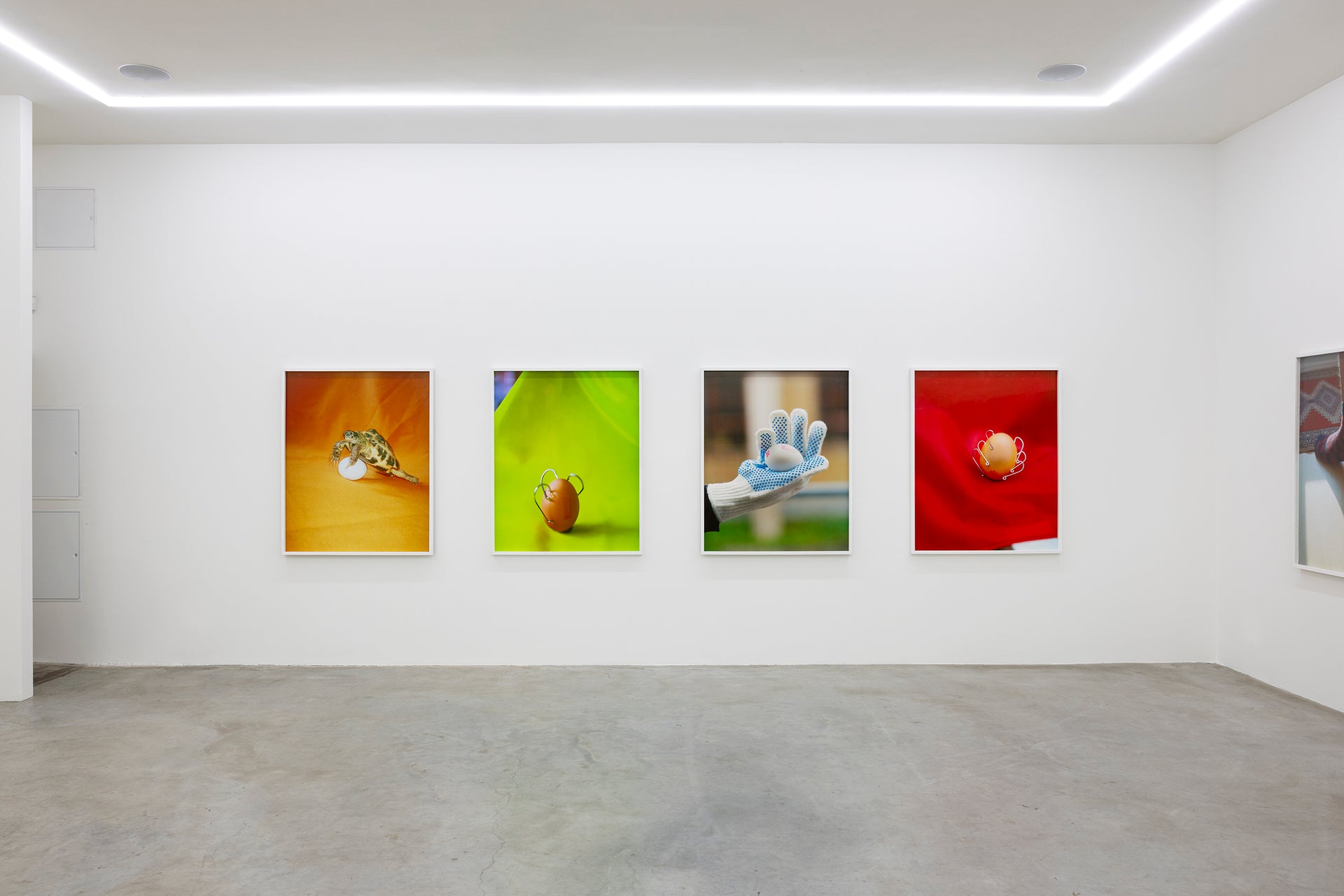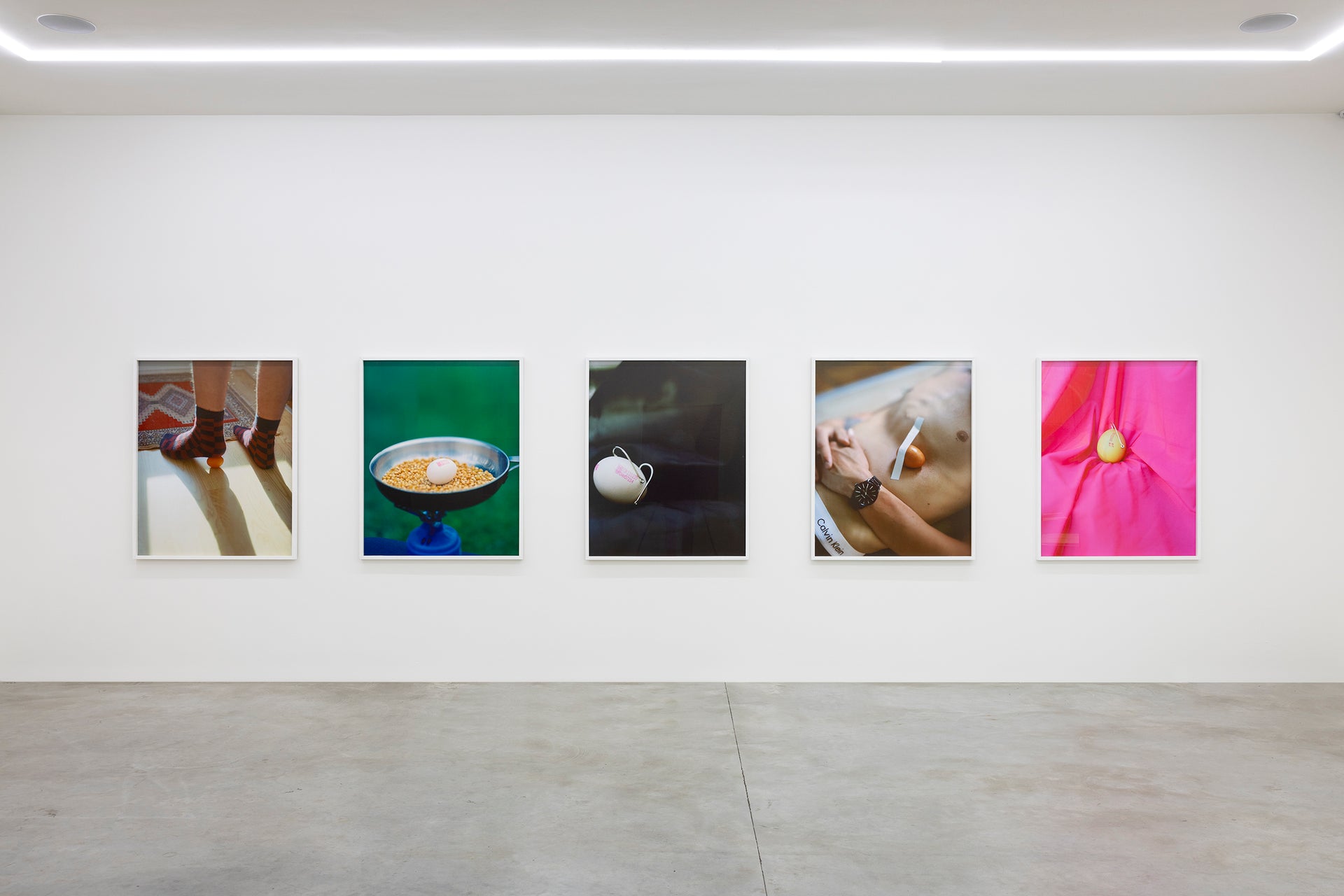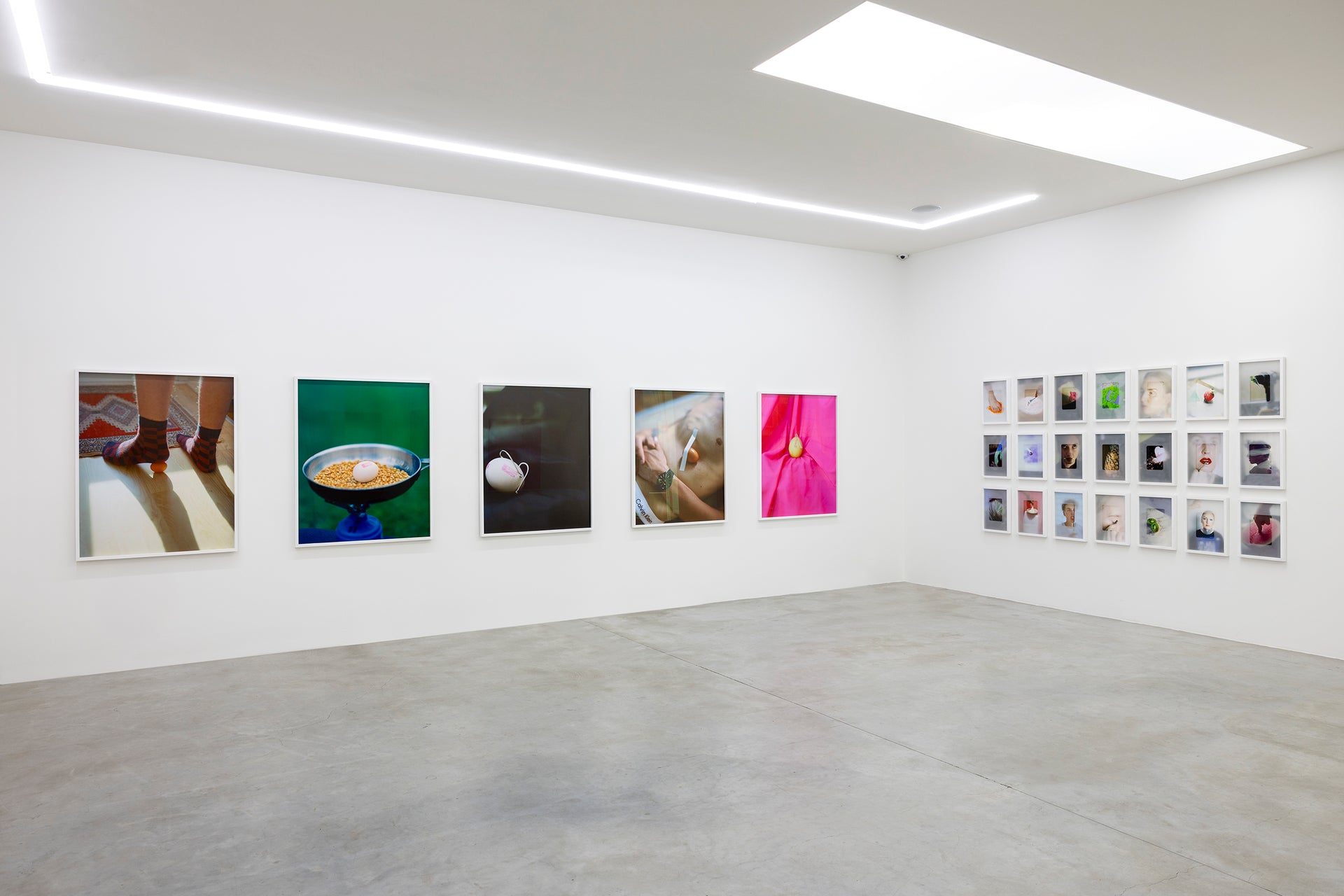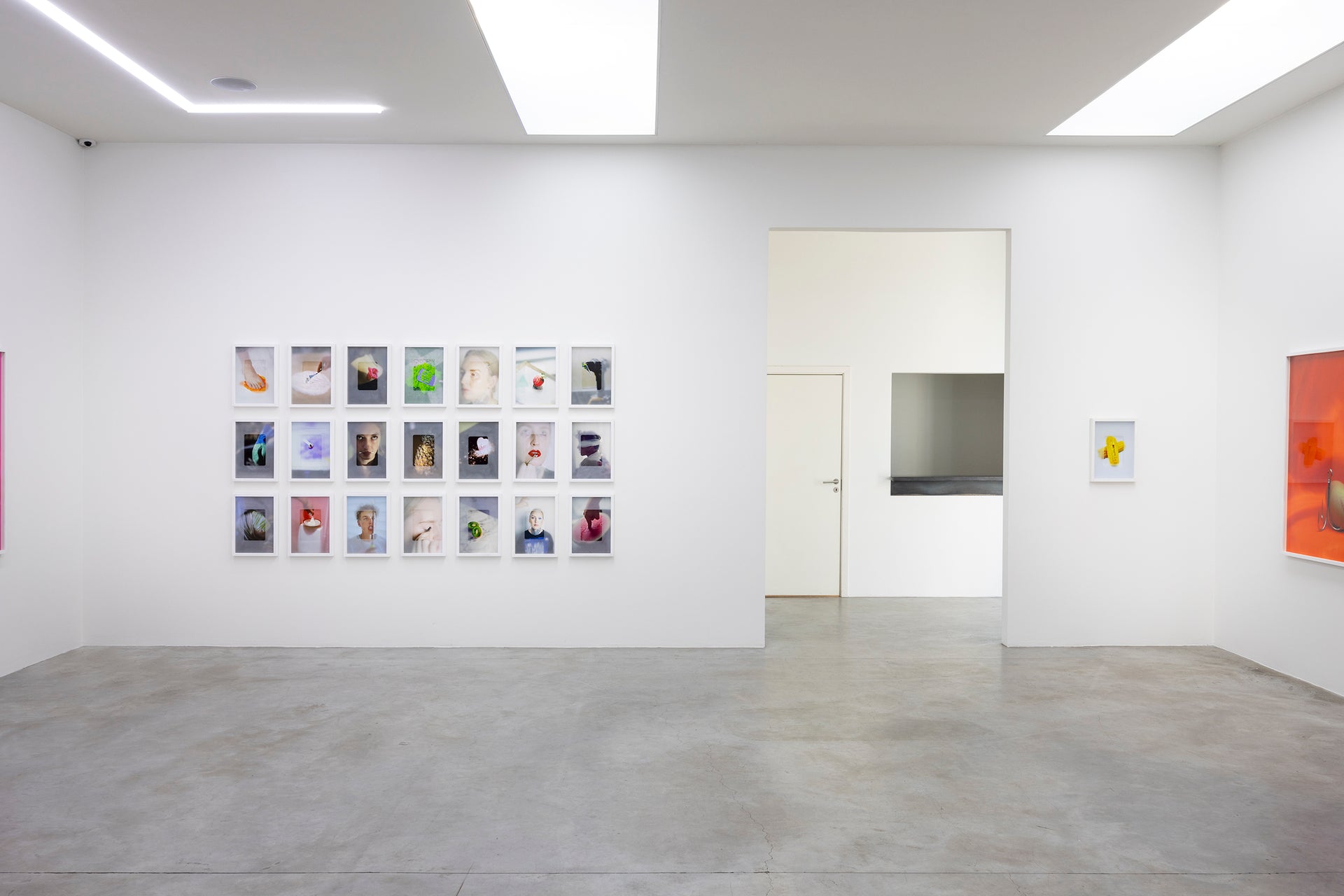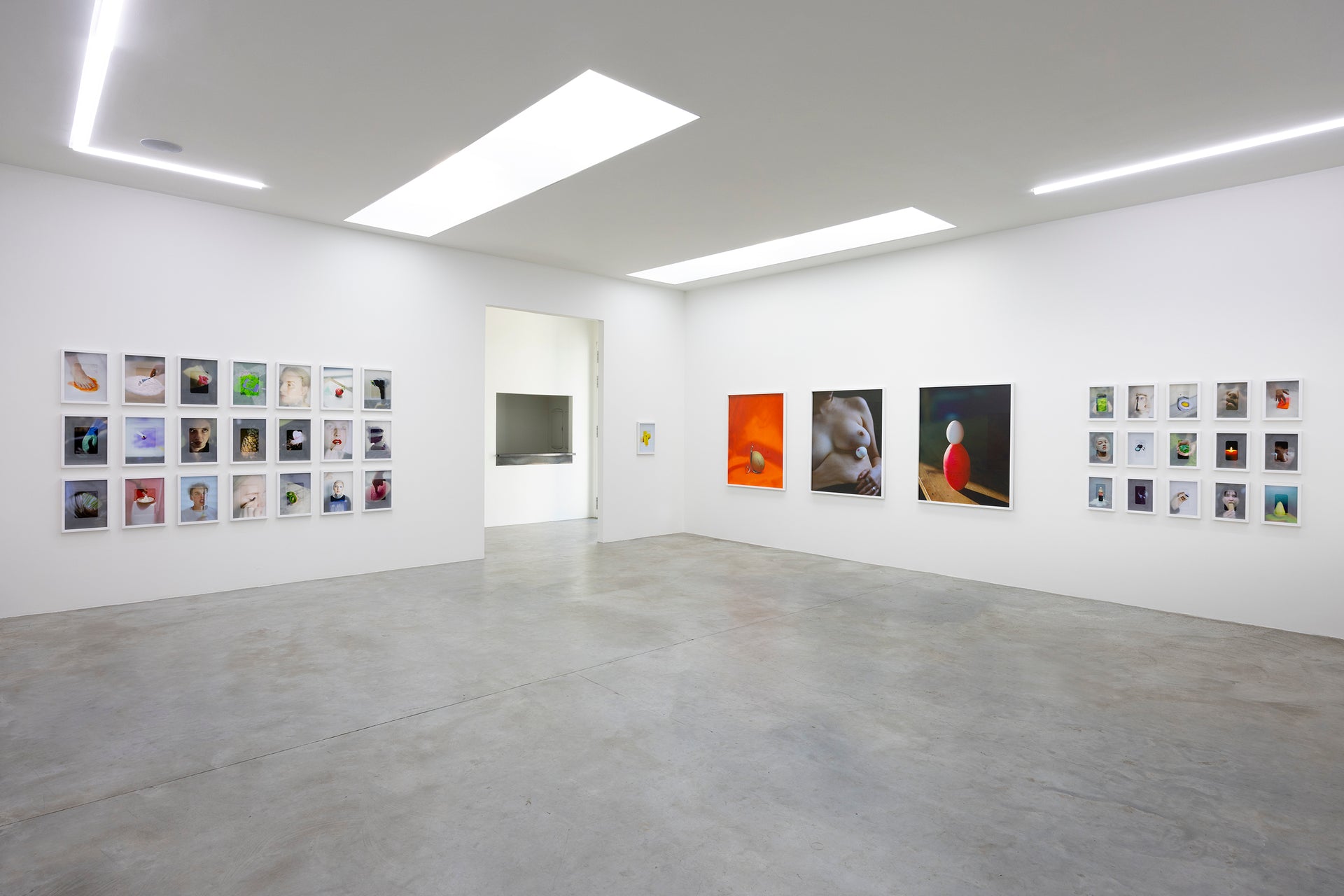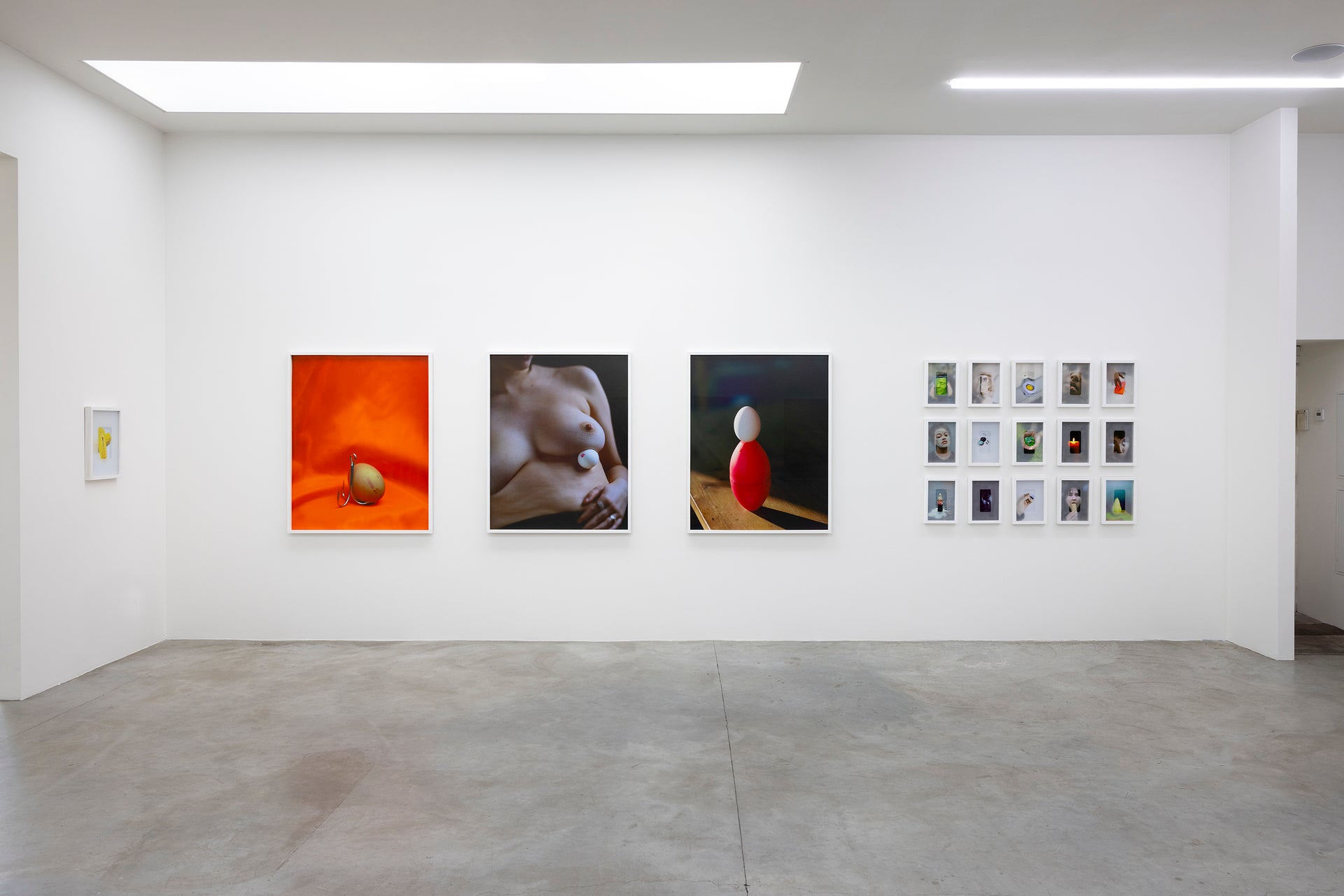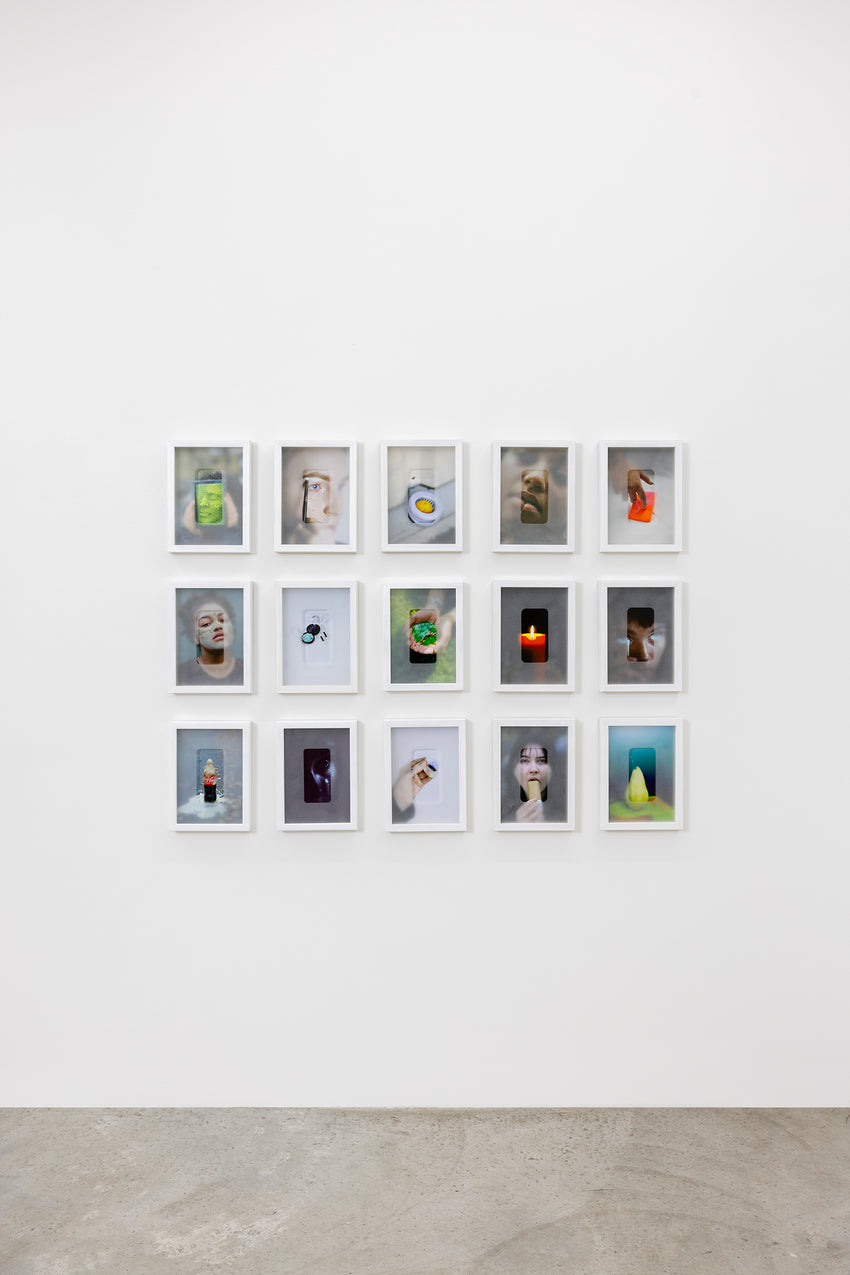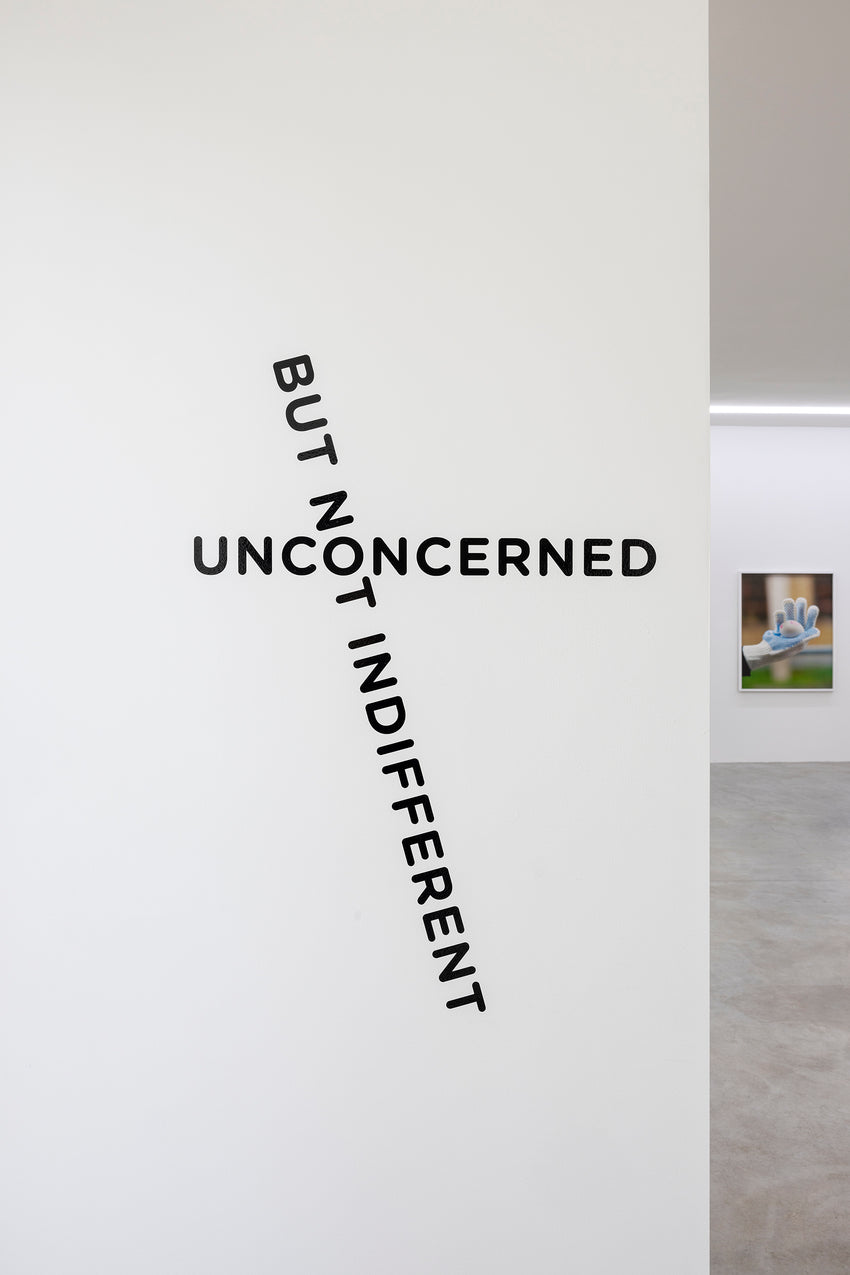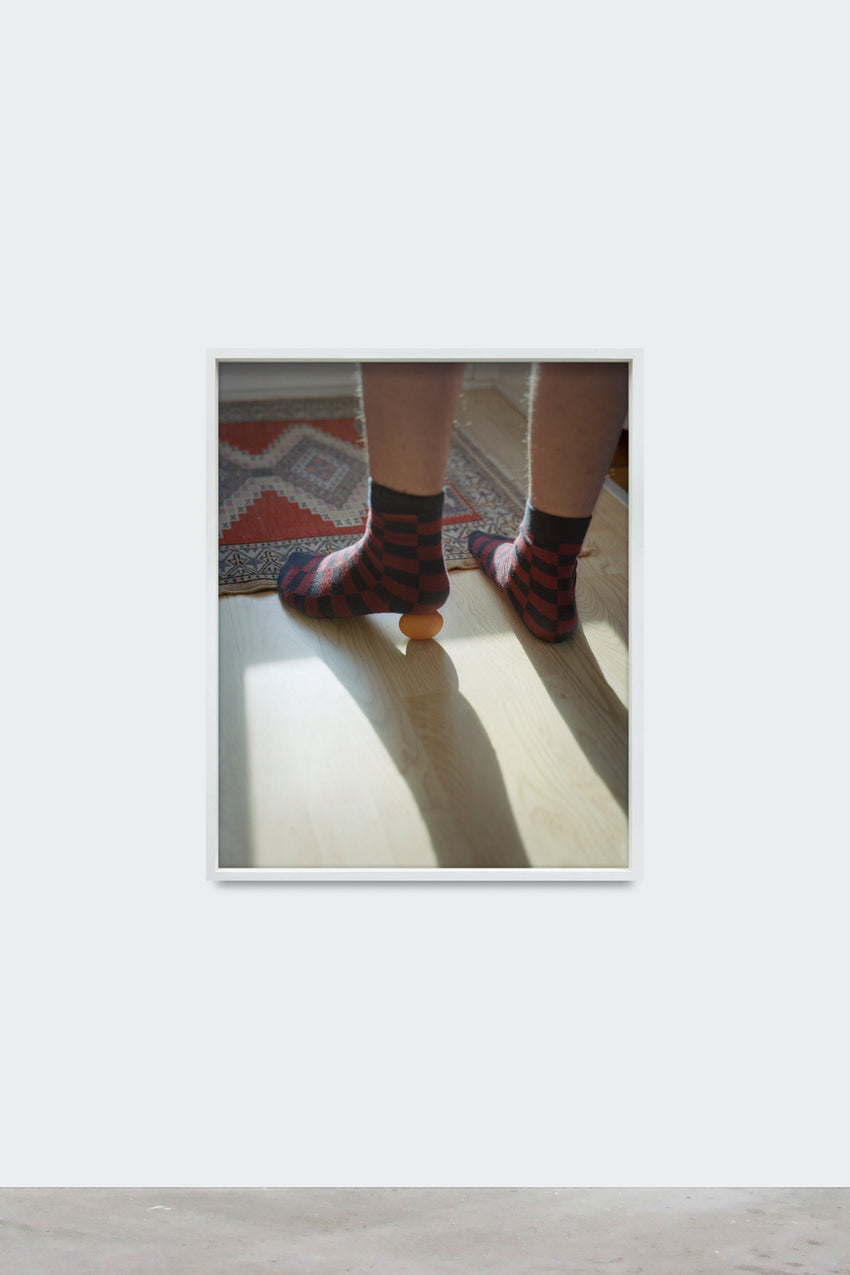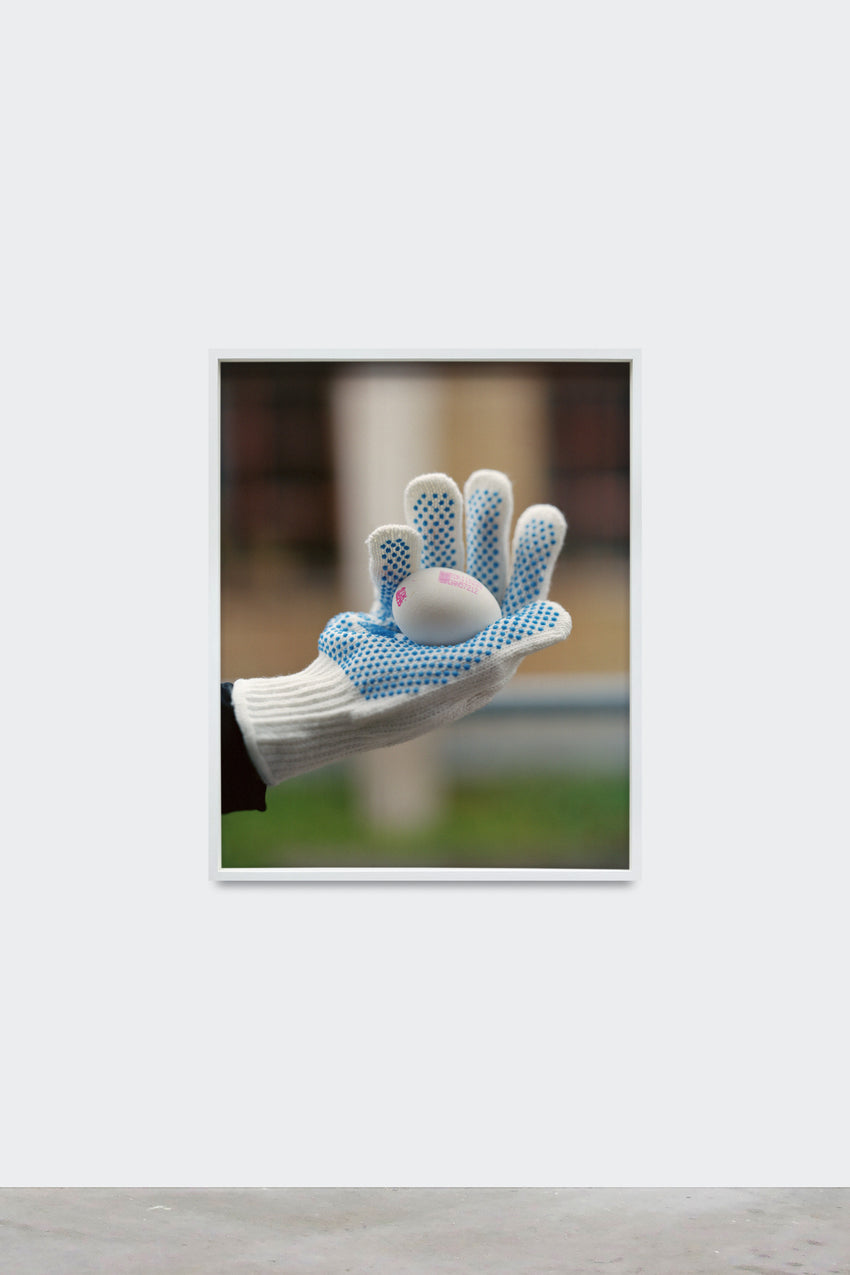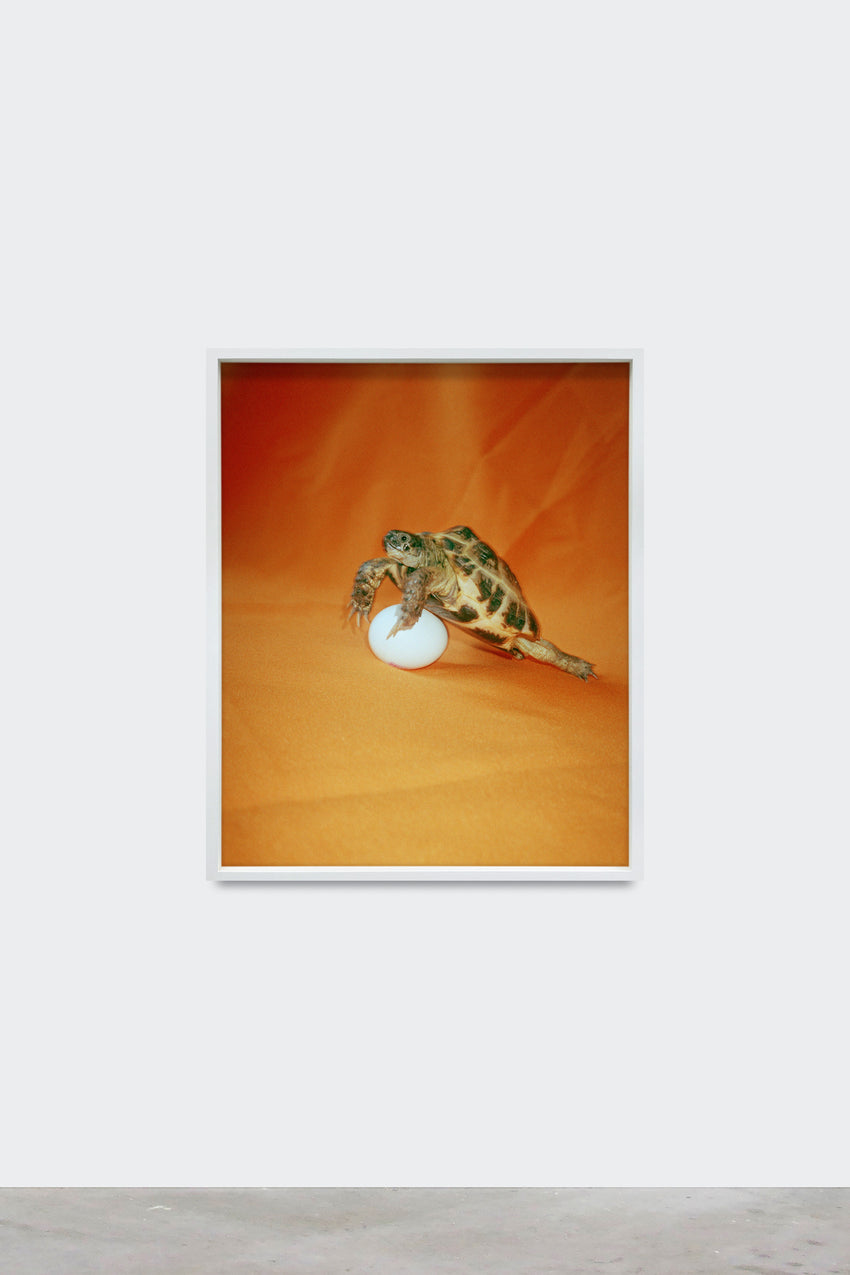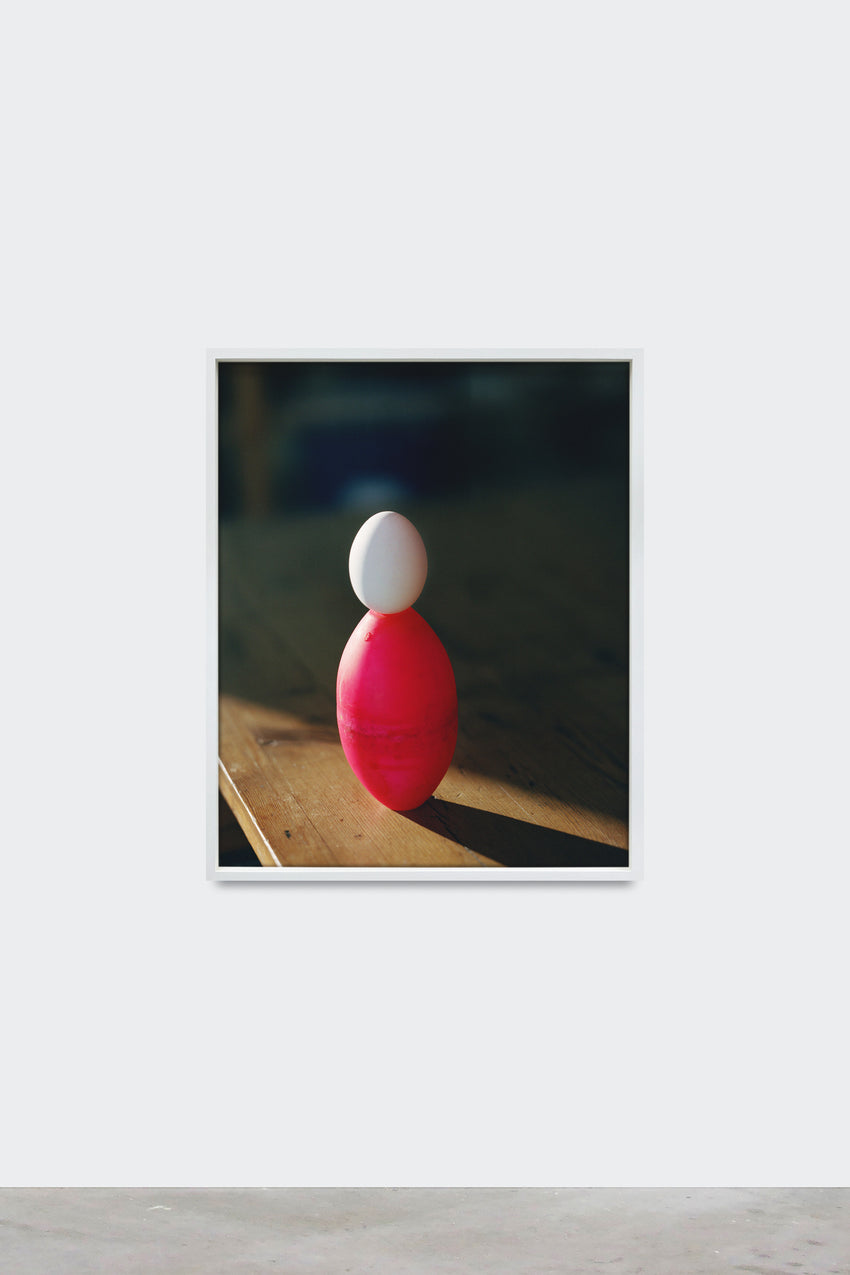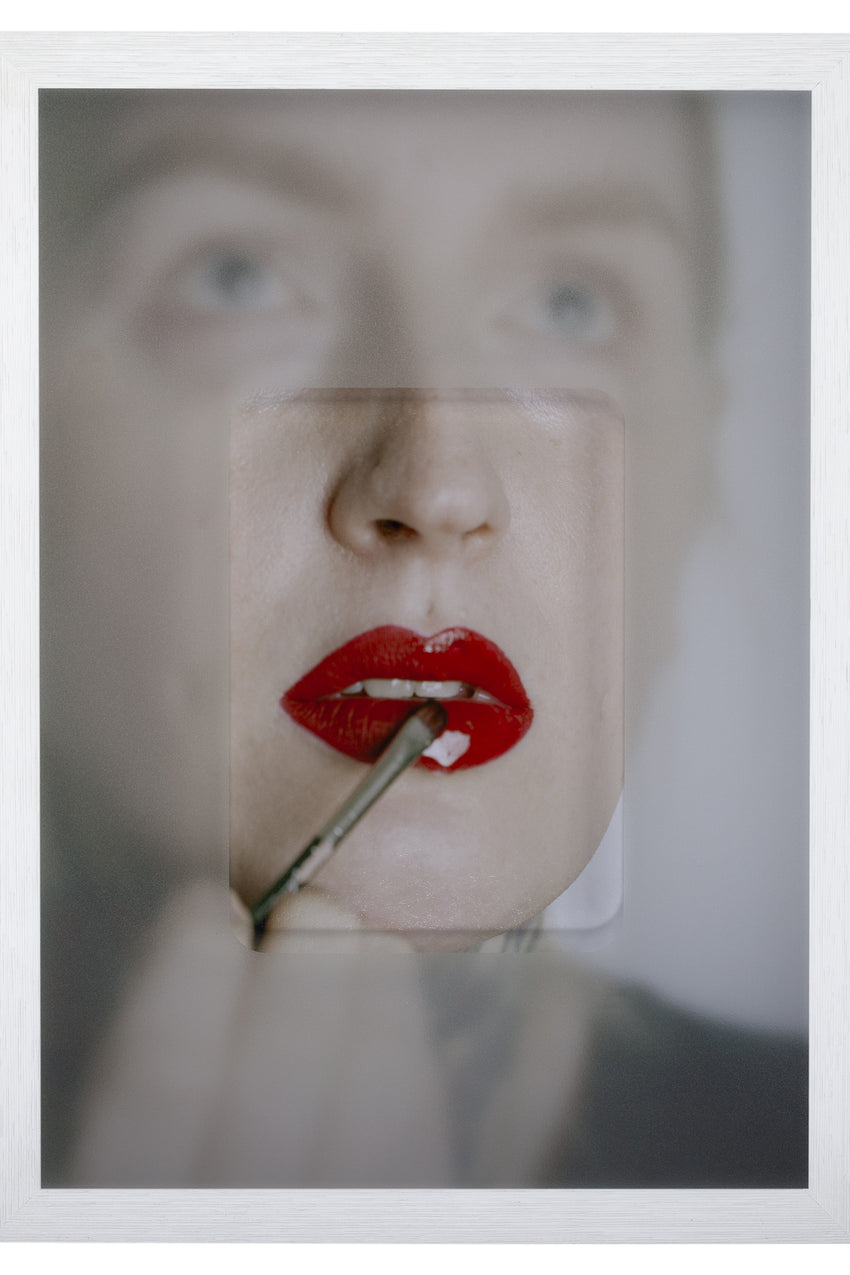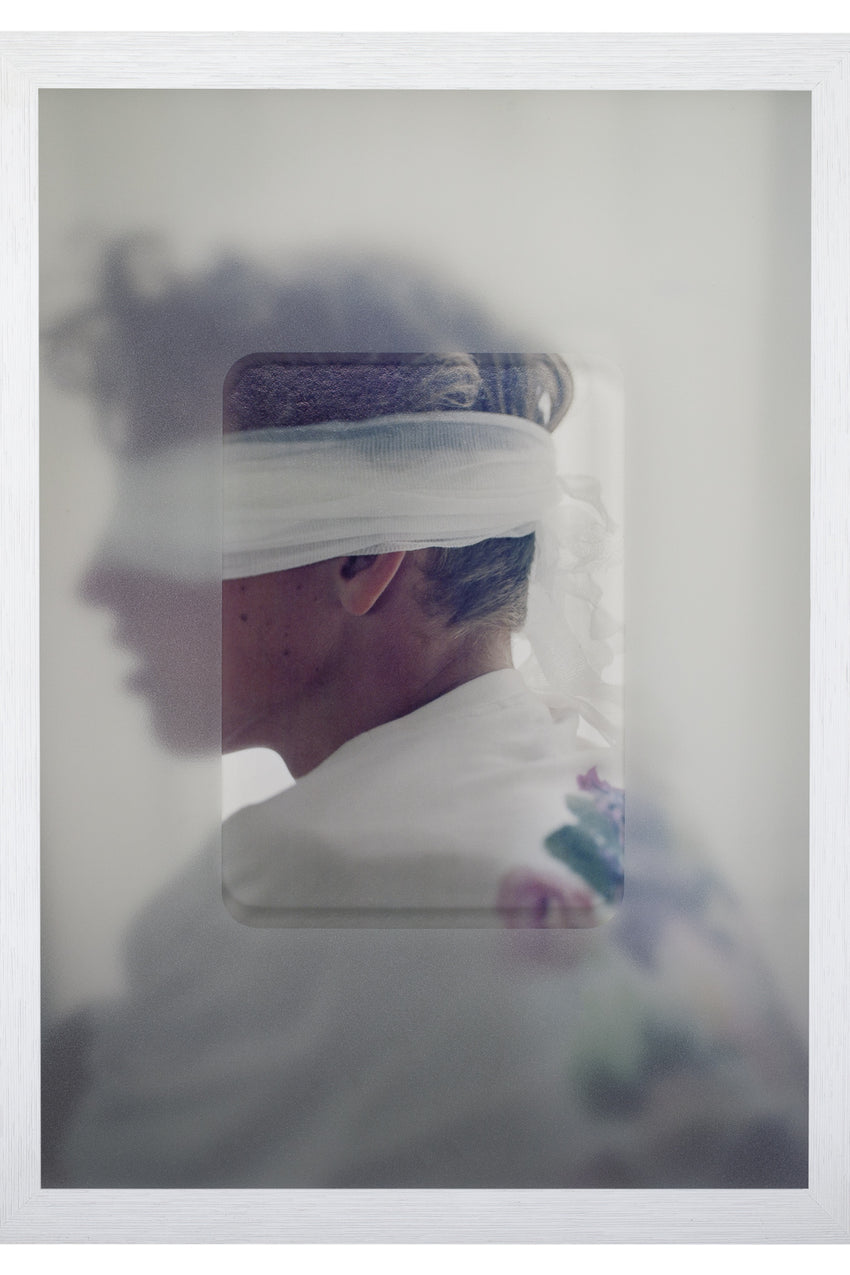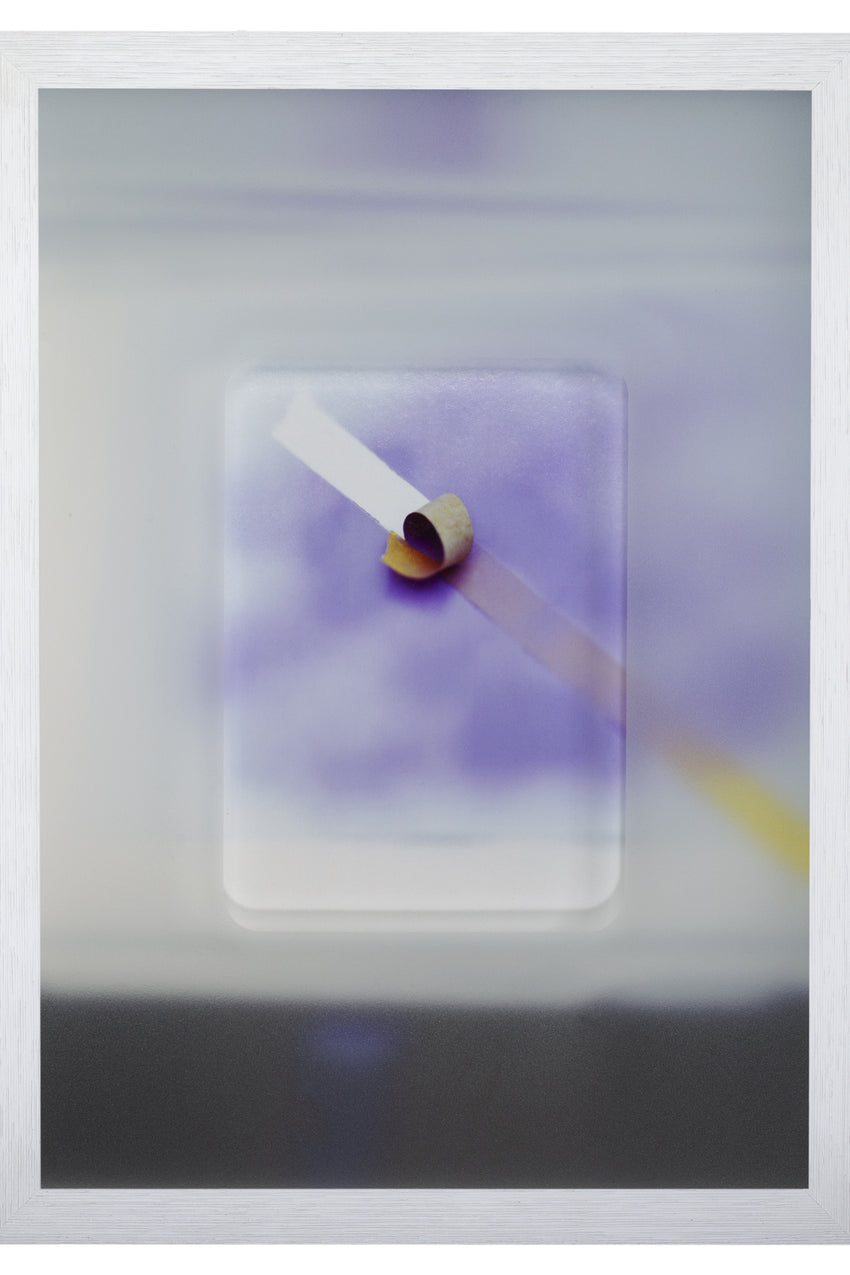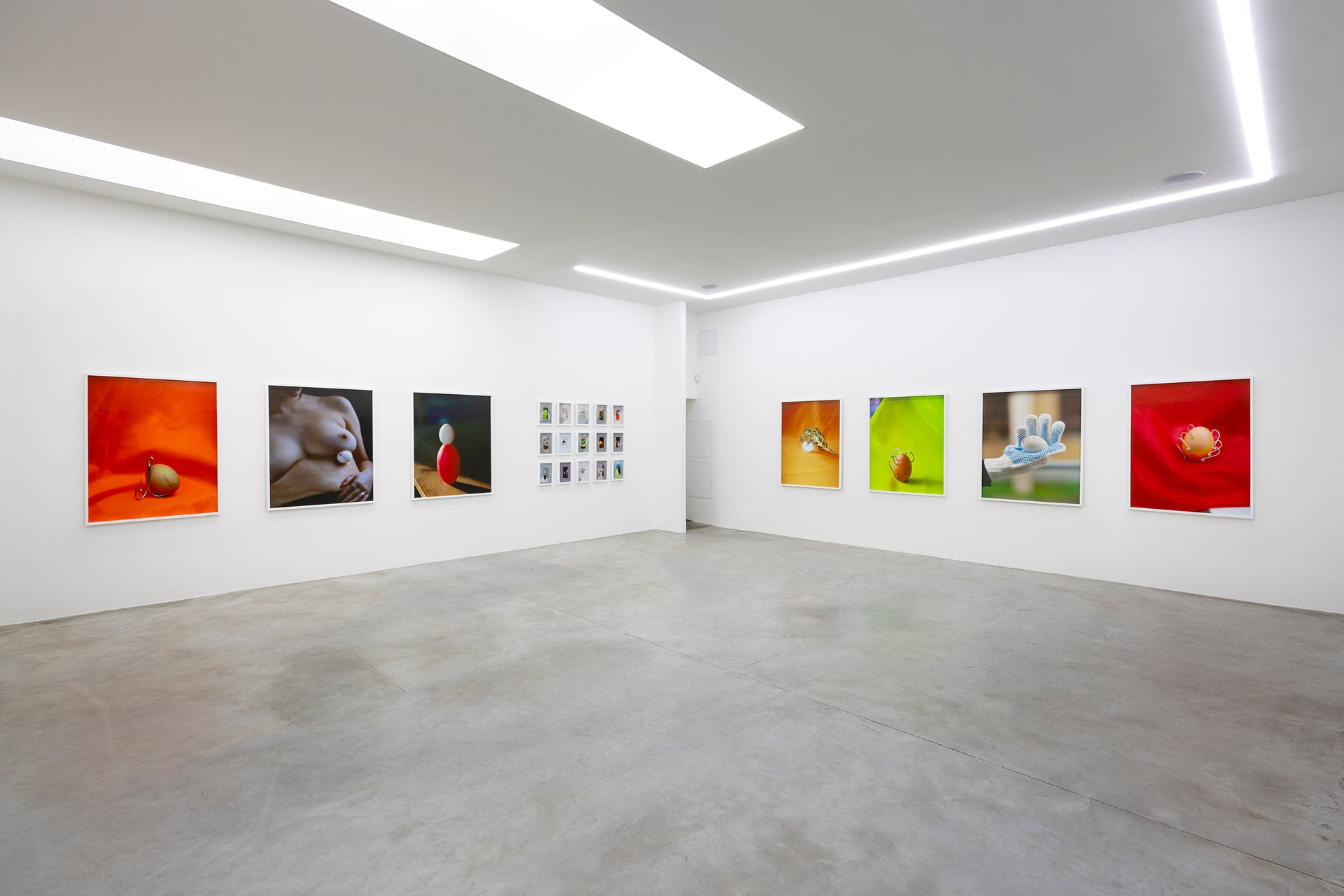Eighteen is pleased to present
Oddly SatisfyingA solo exhibition by Fryd Frydendahl
OPENING RECEPTION: FRIDAY MARCH 3. 2023. TIME: 16.00 - 21.00EXHIBITION PERIOD: MARCH 4. – APRIL 15. 2023
In 2018 the internet magazine Wired published an article about a phenomenon they called ‘the Oddly Satisfying’. This phenomenon had occurred on videos first shared on the social site Reddit but was soon present all over YouTube. The videos featured very diverse activities such as trash being crunched by machines, but also increasingly highly colored artificial materials such as kinetic sand, cake icing and paint being sliced or poured out over different surfaces. They were all labeled Oddly Satisfying because of their ability to raise a special feeling. The journalist referred to ASMR (autonomous sensory meridian response), “a tingling sensation that typically begins on the scalp and moves down the back of the neck and upper spine”. In the beginning the term was mostly used in response to auditory phenomena such as accurately recorded whispering voices and nails scratching against a hard surface. After some time a new wave of material which was either purely visual or combined close up images of well-lit objects being cut, spread or squeezed accompanied by crisp sounds of the same, washed over the internet.
Fryd Frydendahl’s new works are a response to this new phenomena. Having studied different videos suggested to her by ever present algorithms she set out with her analogue 4x5 inch camera. Having worked with commercial photography one could have imagined her miming the slickness of Oddly Satisfying videos not unlike her method for making some of the images in her last book Never Run Faster Than Your Guardian Angel Can Fly. This volume included photographs of products from her father’s fishing enterprise in uncanny detail and a set up with an orange soft drink being poured endlessly into a glass. But this is not what goes on in the new works. Rather Fryd has devised her own take on the genre. There has always been an urge to unsettle the perfect in her work, to disrupt, to stir up, to scratch or smudge the clean surface. And there still is. It makes sense that she could not leave the internet harmony of the Oddly Satisfying alone.
In the article in Wired, Kevin Allocca, head of trends and culture at YouTube, was cited for saying: “I think we’ve always had a desire to watch these type of things, but we just didn’t have a language for it. Now we do.” He may be right because it seems to me as if the genre is related to earlier visual expressions, emotions and art movements. I am thinking first and foremost of early 20th century surrealism. Artists in the movement had a special attraction to objects and worked in many different ways to expose their forms and structures. In the surrealist movement’s exploration of objects, surfaces and liquids film and photography were important tools for revealing form, but even more to bring out the way human investments and sexual interest intervene in our relationship to the inanimate world. This is something which has continued in later forms of contemporary art – in staged photography for instance. So to me Fryd with her new works - which not only explore the Oddly Satisfying but also the internet’s beauty industry - draws on a long tradition of transgressive art and staged photography.
Look at the image of grated cheese. On YouTube videos, flocks of freshly grated cheese sprawl out under the shiny metal, pristine and snow white. In Fryds image, they crawl out in the blue twilight like worms or discolored baby teeth or old people’s toenails. Instead of newly washed hands with pink skin and polished nails which caress and softly squeeze slime between fingers we see a foot stepping in it. The slime comes out between the toes which are white and hairy. Dirt is gathered in visible wrinkles along the bumpy toenails. This strategy obviously speaks against the ideal in the new genre but it also plays upon its complexity. Because of course the Oddly Satisfying developed into numerous subgenres and some of these included less fashionable images of body parts or processes including human fluids such as inflammation being squeezed out of pimples and calluses being removed from feet. While the Oddly Satisfying videos tend to value the almost exorcist expulsion of these human liquids, Fryd’s images seem less invested in tidying up. Much less invested, in fact, with their matter of fact exposure of body and liquid. She works with parody and in this case with a certain all most slapstick kind of “stepping in it” humor.
The photograph of the foot makes me think of Jacques-André Boiffards mysterious photographs of toes which illustrated Georges Bataille’s article “The Big Toe” in the surrealist periodical Documents. On Boiffard’s image the toe appears out of the darkness all white with abnormalities and striped nails. In the article Bataille describes the big toe as that which differentiates man from animal. It is the organ which makes it possible for man to stand and have his head in the air, and that is the zone in which he can foster the ideal, the ideal to which the foot then paradoxically becomes the contrast. Bataille writes: “Human life entails, in fact, the rage of seeing oneself as a back and forth movement from refuse to the ideal, and from the ideal to refuse - a rage that is easily directed against an organ as base as the foot”.
”A back and forth movement from refuse to the ideal” is a pretty accurate description of Fryd’s work here, even though her ideal is never without flaws. From the base toe to the elaborately made-up face where body hair has been removed, where eyebrows are turned into thin drawn lines and lashes into flourishing ornaments adorning the glowing light blue canvases of the eyelids and where the lips are painted thick with red lipstick. The Q-tips and the cotton pads are played with as satirical props: Usually utensils for removing clumps of mascara or out-of-place concealer, here they appear as isolated esthetic objects, both revered and ironically toyed with as in the case where a model holds the cotton swab between her teeth like a rose.
Fryd claims to be indebted to her idol of all times, the surrealist artist Man Ray. In the interwar years in Paris he developed his own unique style in photography which included numerous photographs of aestheticized bodies and body parts. He was one of the main characters in working the classical surrealist theme: the animate in the inanimate and vice versa. One does detect the inspiration from the master in Fryd’s ongoing fascination with lashes and tears running down cheeks, but again Fryd is far from the interwar glamour of Man Ray. Man Ray’s universe is a universe where the skin and the body liquids always appear as something else. The skin appears all white and thus a photograph of a female torso and a similar marble sculpture make the Danish photo historian Lars Kiel Bertelsen ask: Who can tell which one is alive? Equally in Man Ray’s work lashes become calligraphic ornaments and tears precious pearls. In Fryd’s images, the artificial lashes are in the midst of being peeled off, revealing the thin natural hair. The skin stays carnal and mostly pink and sometimes shiny. Two close up portraits are even reddish and brownish. They make me think of one of the masters of theatrical photography, Cindy Sherman, her iconic filmstills (1977-1980) which halt a dramatic facial expression mid-scene and her later dark toned grotesque portraits. In Fryd’s images it is unclear whether it is the lightning or the color of the model’s face or the tone of the film which make her look like she is stepping out of a B-movie or magazine from the 1960ies. No matter, the cinematic glamour is ruptured anyway by the greasy stripes which run, or rather are applied, to her cheek.
As in her previous work, Fryd continues to explore the body as sculpture. Her nephew whom she has been photographing since he was a child has shed his baby face and has grown into a true Adonis. He is seen pressing his tongue against the blade of a knife. A mirror blank knife which reflects the one half of his face. Or does it? There is something in the reflection which makes one doubt it. Perhaps Fryd is using one of the tricks she sometimes employs to challenge photographic realism? And even though there are no pimples the photograph is far from the aestheticised portraits which Danish artist Trine Søndergaard is famous for. In Søndergaard’s series Untitled Reflections girls hold op mirrors in front of their faces, mirrors which cover the whole or half of the face. They are seen as a challenge to the belief that a portrait shows the essence of the portrayed. Fryd’s photograph of the nephew as a young man offers a less stoic but equally serious reflection on youth, time and the portrait as genre.
When I read about the Oddly Satisfying images and videos I am surprised that references to fetishism and voyeurism are so few. Is it because people are sick and tired of Freudian interpretations? Well, I at least am not capable of seeing repetitive in and out movements or liquid flowing without thinking about sex - not to speak of fetishism and voyeurism which are both integral to photography because of the fact that we are always looking at something but never able to actually touch it. Fryd has previously objected against Freudian interpretations of her work. But in this series she is obviously playing with sexual stereotypes, as when a roll of marzipan is being stuck into a mouth, or fruits are cut open or penetrated with fingers, not to speak of the favorite fantasy of at least Danish school teachers in the 1970ies: the Coca Cola bottle. In Fryd’s version the shaken carbon dioxide creates an explosion when the lid goes off and the sticky brown liquid splashes all over and then lies in a white puddle around the bottle. That’s Freudianism in your face but at the same time I cannot help to think of all the surrealist experiments. There is something sculptural to the way the liquid covers the top of the bottle as if it was made of Polyurethane foam and the way the liquid creates a fantasy figure on the ground. Which again reminds me of all the high-art revolt against realism in all kinds of action painting. Not least when hanging on the walls of a white cube.
Fryd’s new work is a welcome reflection on the constant flow of ‘reels’ with people involved in all sorts of acts from DIY projects to beauty tips and of course especially the Oddly Satisfying as a genre. The latter show repetitive acts but they are also part of a repetitive system. What we experience when we see reel after reel is made possible by a computational invention called the infinite scroll. It was introduced in 2008 and was inspired by slot machines or one-armed-bandits. It’s become a symbol of addiction, a surrealist being – half- machine, half-man - in constant circular motion. Jacking off with two arms, with eyeballs glued to the rolling dice. Looking out for a quick fix of dopamine when the fruits (not unlike the emojis we share to show liminal emotions) line up and match. But we are equally addicted to our little hand-held machine, slaves of the infinite scroll on our mobiles which make the eyes dry as Sahara from the tons of kinetic sand flowing into them. Fryd stops the dice from rolling for a moment, she digests the fruits and gives them back to us with scratches and knife marks. In digital still-lives which are rather oddly dissatisfying than satisfying and make us remember images from both the past and present. They are framed and covered by glass which has been sand-blasted to leave the image visible only in smartphone frame size. To remind us that there is a world outside. As well.
- Mette Mia Krabbe Meyer, 2021
Fryd Frydendahl, born 1984 in Hvide Sande, Denmark, lives and works between Copenhagen, Denmark and New York City, USA. Forthcoming, ongoing and recent exhibitions include: MAZE – Potential Archives, Center of Photography, Copenhagen, Denmark, opening 25.03.23, Kids, Kunst Museum Brandts, Odense, Denmark, 2023 (ongoing), The Camera and Us, The Royal Danish Library, Copenhagen, Denmark, 2023 (ongoing), Lånerkort (Library Card), Vandrehallen Kunsthal, Hillerød, Denmark, 2022, and Oddly Satisfying, Viborg Kunsthal, Denmark, 2022. A new monograph Salad Days focusing on Frydendahl’s portraiture over the past decade has just been published by Marrow Press.
Mette Mia Krabbe Meyer has a Ph.D. specialised in photography from the Department of Arts and Cultural Studies at the University of Copenhagen, Denmark. She is a senior research fellow at the Royal Danish Library, Copenhagen, Denmark.
